By Davide Fioraso
Photos Camilla Pizzini
With Komoot
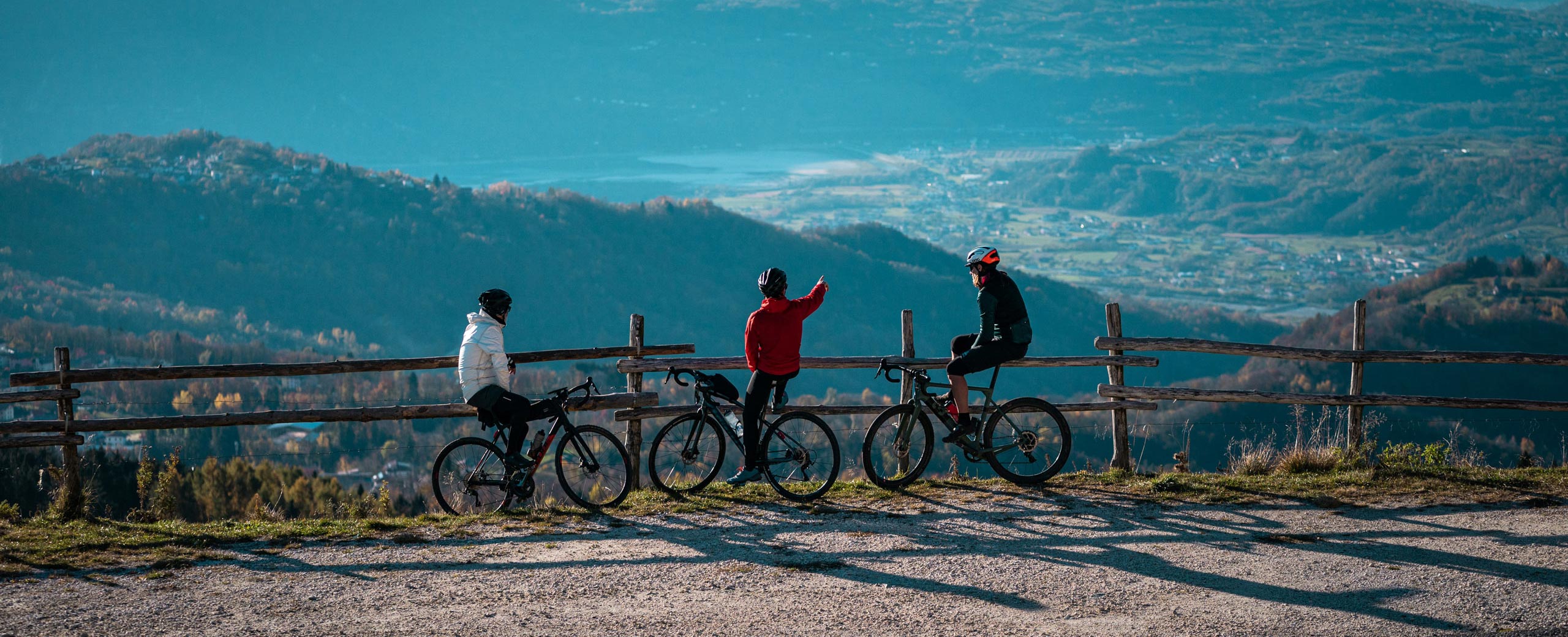
Gravel Bike Trip with Komoot: Cansiglio Classic Tour
«Hi Davide. I am passing by your area and I have half a day off. Where are you taking me?».
I have the perfect place. And the idea too. What I miss is a route that really concretizes distance, surface, height difference and duration, able to satisfy that unstoppable desire to discover new places, even in a territory already much explored. After all, isn’t this the desire that unites the most of us? I want a ring route to be covered in a few hours, which satisfies me physically and mentally, that highlights the experience, not the performance. I open up Komoot, fix the starting point and in the blink of an eye I have all the highlights of the Tour Planner. “Got it. I’m sharing the route with you, a super classic itinerary, You’ll love it!”
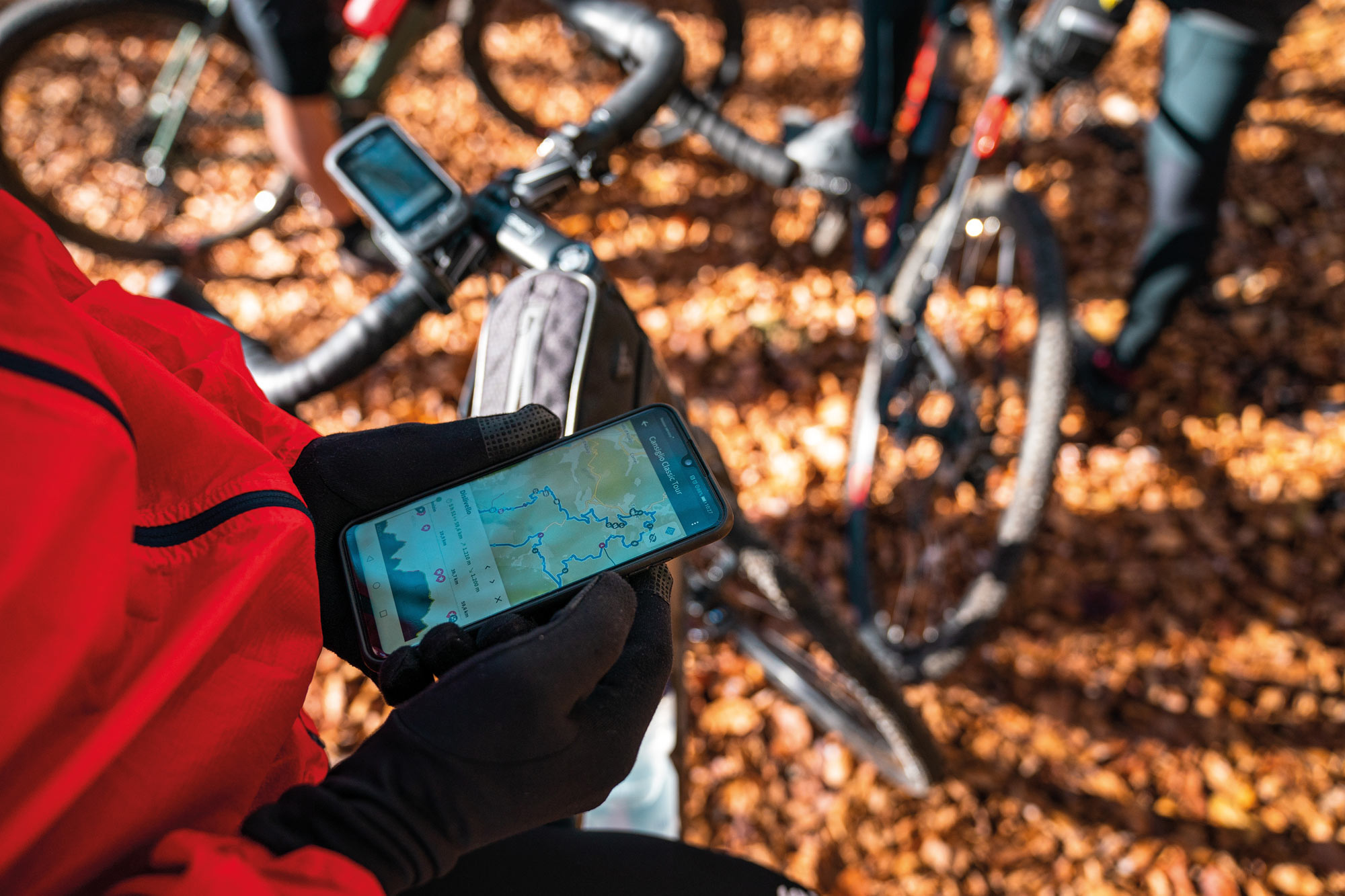
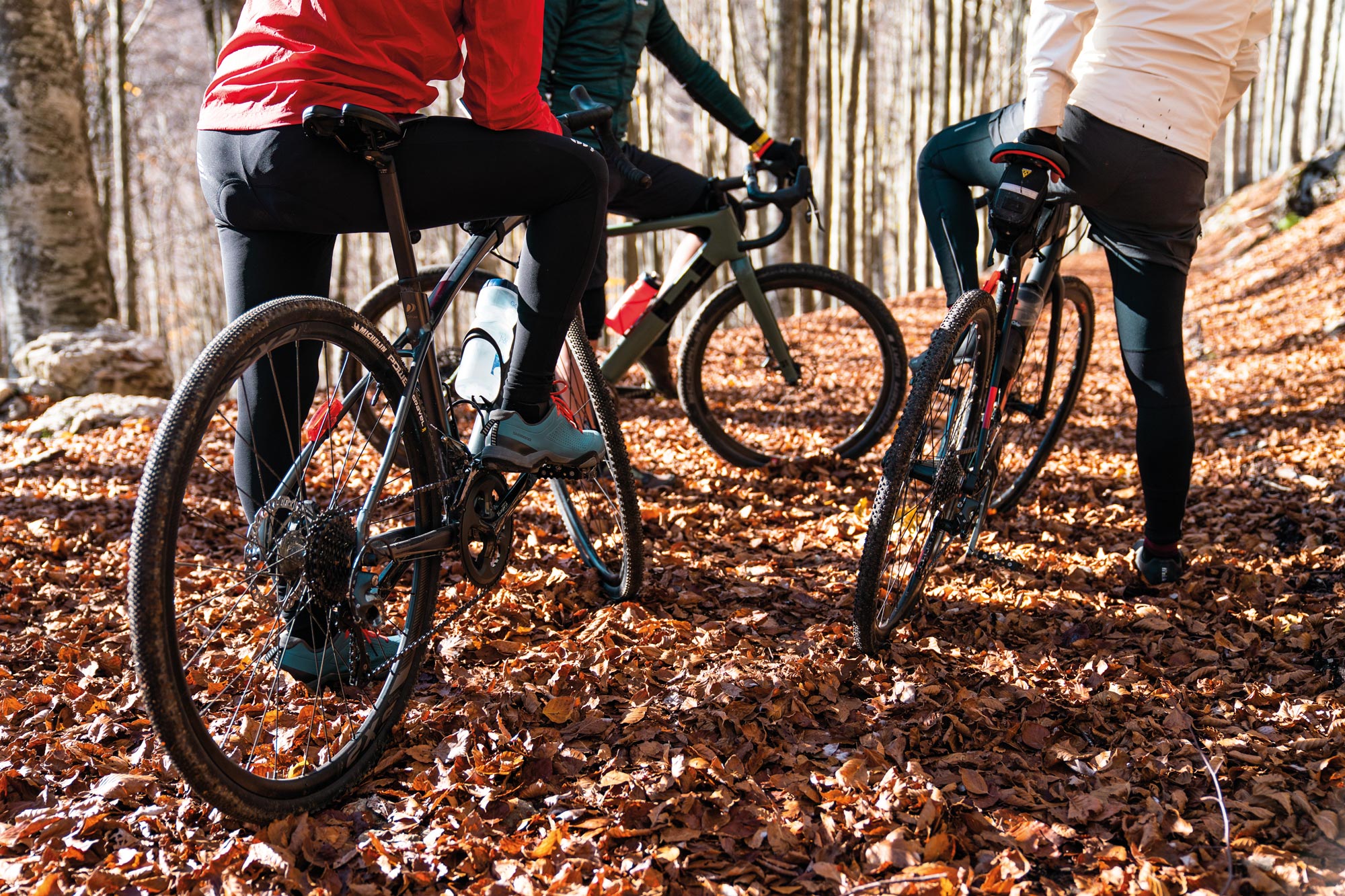
The chosen place is called Cansiglio, a plateau of the Carnic Prealps located between the provinces of Belluno, Treviso and Pordenone, a sort of concave valley overlooking the Venetian plain. To the North it is bordered by the Alpago region, where the mountain range of Col Nudo-Cavallo stands out, while to the West, beyond Millifret and Pizzoc, it falls on the steep slope of Val Lapisina. Crowning this characteristic basin shape is the homonymous forest, one of the most important environmental resources of the entire region of Veneto. A natural lung consisting of 7000 hectares of woods, a site of community interest that enjoys a special protection regime. The Cansiglio Forest, for us who live here, is a spiritual sanctuary in which to immerse ourselves in order to escape from the everyday life of the outside world. A place where our souls merge with one of the greatest expressions of nature.
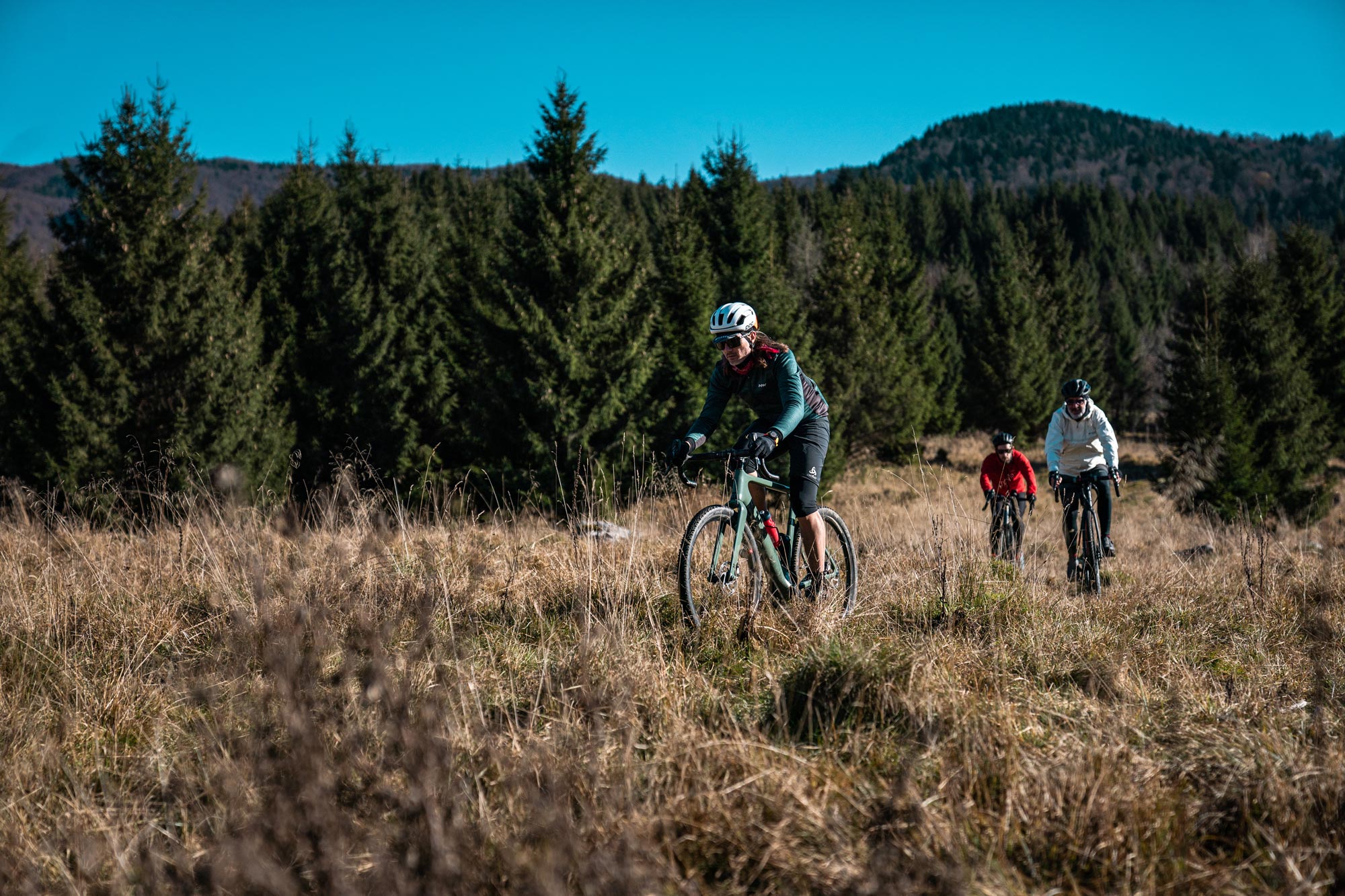
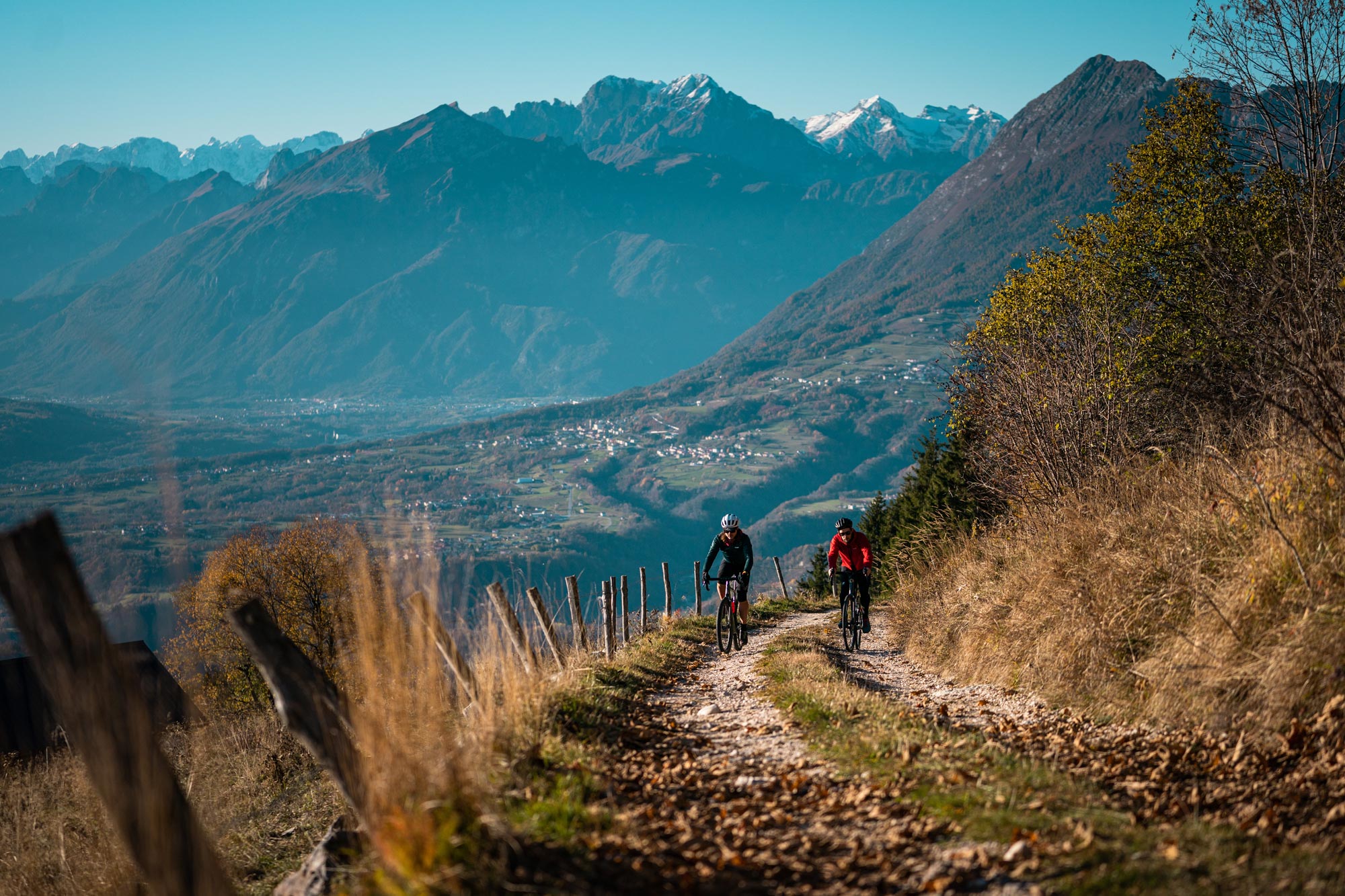
The meeting place, on a cold November morning, is at the former San Osvaldo Refuge, an emblem of the environmentalist struggle on these lands, a symbol of that privatization process, wanted by the regional government, which would mean the breaking of an integrity preserved up to date. A light frost covers the meadow of Pian Cansiglio. In this basin, more than in other places, the cold air that descends from the internal slopes stagnates, giving rise to a strong thermal inversion. There will be other times and ways to warm our bones. We save the route in offline mode and synchronize it with our GPS devices for navigation. The route guides us towards North, after a few kilometers we are already in Pian Osteria. Seat of a Cimbrian settlement rebuilt after the last World War, today it houses the Museo Regionale dell’Uomo in Cansiglio which collects documents and testimonies on men’s relationship with these lands, from prehistoric times to the arrival of the Cimbrian community at the end of the eighteenth century from the Asiago plateau. Strongly linked to woodworking, the Cimbri community had developed a thriving craft activity of building boxes intended to give shape to dairy products. We turn right, towards East, up to the pastures of Valmenera, one of the three great depressions that characterize the area. Here, up to 10.000 years ago, there was a tongue of the ancient and vast Piave Glacier. We leave to our left a humid environment that hosts unique marsh plants and where mallards, teals, garganeys and lapwings stop. The route borders the Pian di Landro-Baldassare Nature Reserve, an area of undoubted beauty, where it is not uncommon to come across birds of prey such as buzzards and kestrels. Just enough time to free ourself from gorse and peaty deposits and, at the junction with Candaglia, it is time to go up to Pian Rosada, an area particularly affected by the fury of the 2018 Vaia storm. Fallen or compromised trees by the very strong gusts of wind, amount to several thousand cubic meters of timber. Immediately after the storm, the regional agency started reforestation operations by introducing a special novelty, a sort of open-air laboratory: experimental “deer-proof” fences for the protection of young trees. Yes, because among the secret masters of this vast state-owned area, where hunting has been banned for some time, there are first of all roe deers and deers, the easiest mammals to spot, especially at dusk. An ever-expanding phenomenon, mainly linked to the lack of natural predators. Although, in recent years, the presence of wolves has become increasingly important.
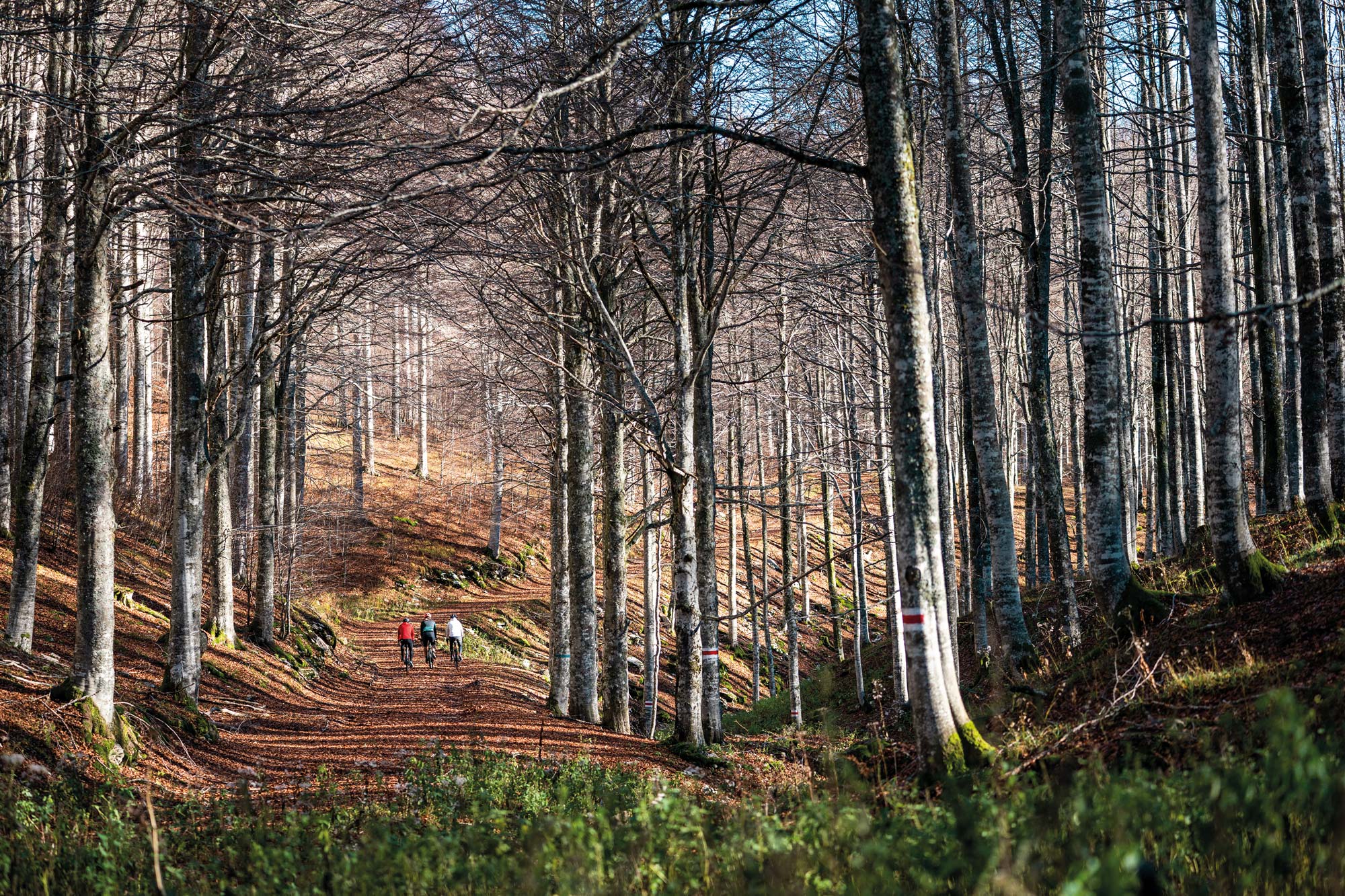
In rapid succession, after one of the first uphill stretches, we reach the Cimbrian village of Pian Canaie, founded in 1894 by the members of the Gandin family. From here begins the route to Palantina and Monte Cavallo, the destination, in those years, of world-famous mountaineers such as Tuckett or Whitwell. Coming out of the woods we are welcomed by the warm rays of the sun. Ferns and sorrel, untile now protected by the foliage of the undergrowth, soon give way to the mountains of Alpago, in a view that opens up from Sella di Fadalto and in which Dolada, Col Nudo and Teverone peaks stand out. It is the first taste of civilization that winds its way through small residential areas, characteristic stone houses with stepped roofs and rare examples of noble architecture. We reach Col Indes and Malga Pian Grant, at the foot of Guslon, a meeting point for the countless ski mountaineers of these mountains. We are at the turning point of a small ring that between Pian delle Mosche, Sgurloi and Tambre will take us back to the hamlet of S. Anna, in the kingdom of Diego and his dairy cattle. But here there is also one of the most curious and unique things that can be found: the House of Books, a house-museum entirely carved in wood by Venetian artist Livio De Marchi. A fairytale sculpture that seems to come out of a tale by the Brothers Grimm, full of extraordinary details. Hundreds of carved books decorate the external walls, the roof is a huge open book while the chimney is replaced by a large fountain pen. The fence is made up of a long row of colored pencils and there’s a large pair of glasses as a gate.
We definitively say goodbye to Alpago along the narrow agro-forestry-pastoral route that will connect us to the provincial road 422 up to Campon, one of the main valley furrows from which you can access the Cansiglio basin. A handful of inhabitants, two taverns and the remains of a small railway built by Austrian troops during the First World War. Campon was a meeting place for Cimbri on their way to Madonna del Runal, who stopped here to consume the typical holiday dish. For us it is the turning point on the long-awaited Strada del Taffarel, the fascinating forest route that will accompany us to the Monte Pizzoc roadway. It is time to push on our legs and to climb the 6km of Col Mazzuc, overcoming the detour to Malga Mezzomiglio and entering the Pian Parrocchia – Campo di Mezzo Nature Reserve. It is here that, thanks to Komoot’s highlights, the advice left by other members of the community, we discover “Casetta dello Scozzese”, a small woodcutter’s hut that a Highland guy fond of these places took care of for a few years.
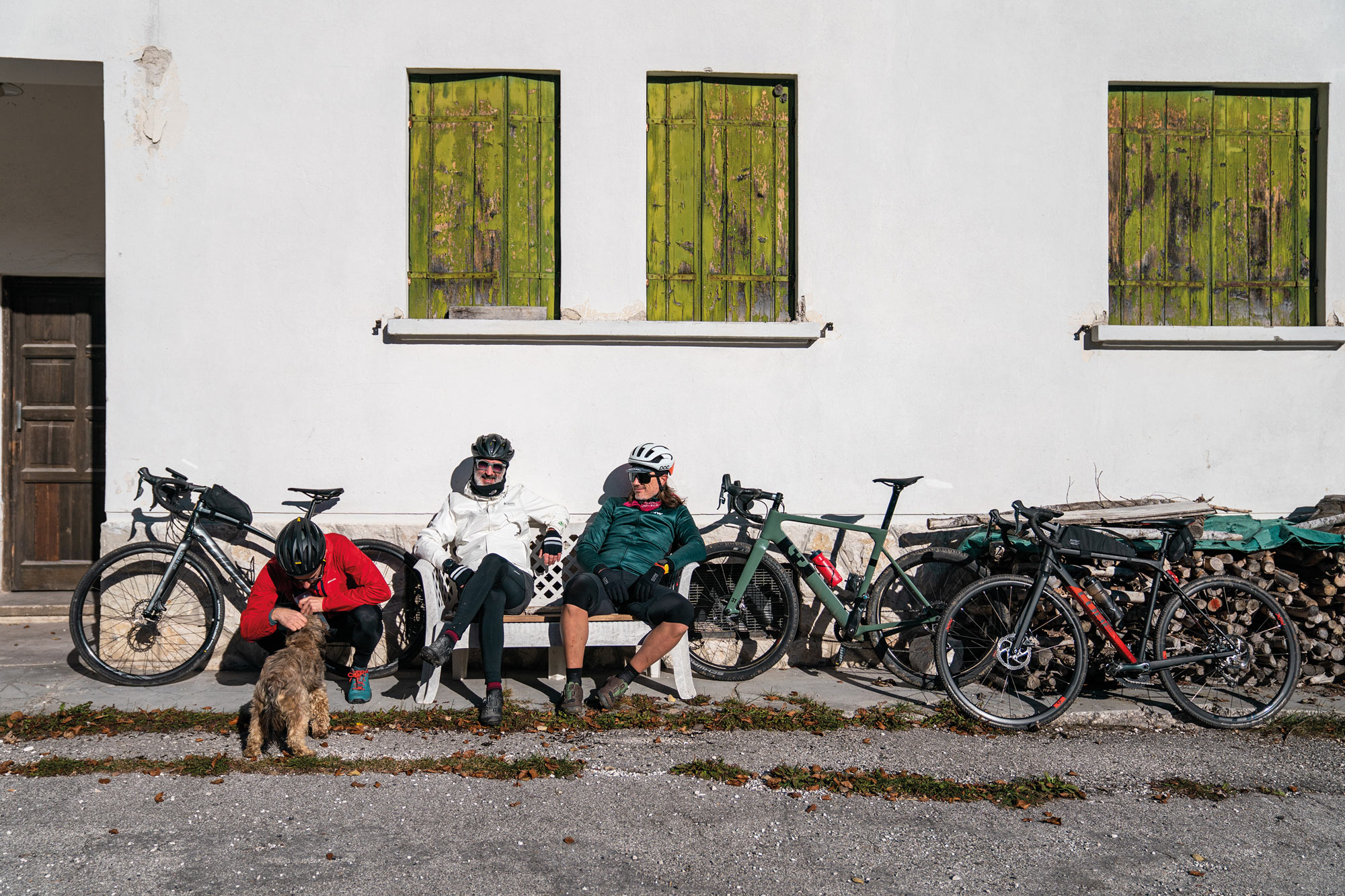
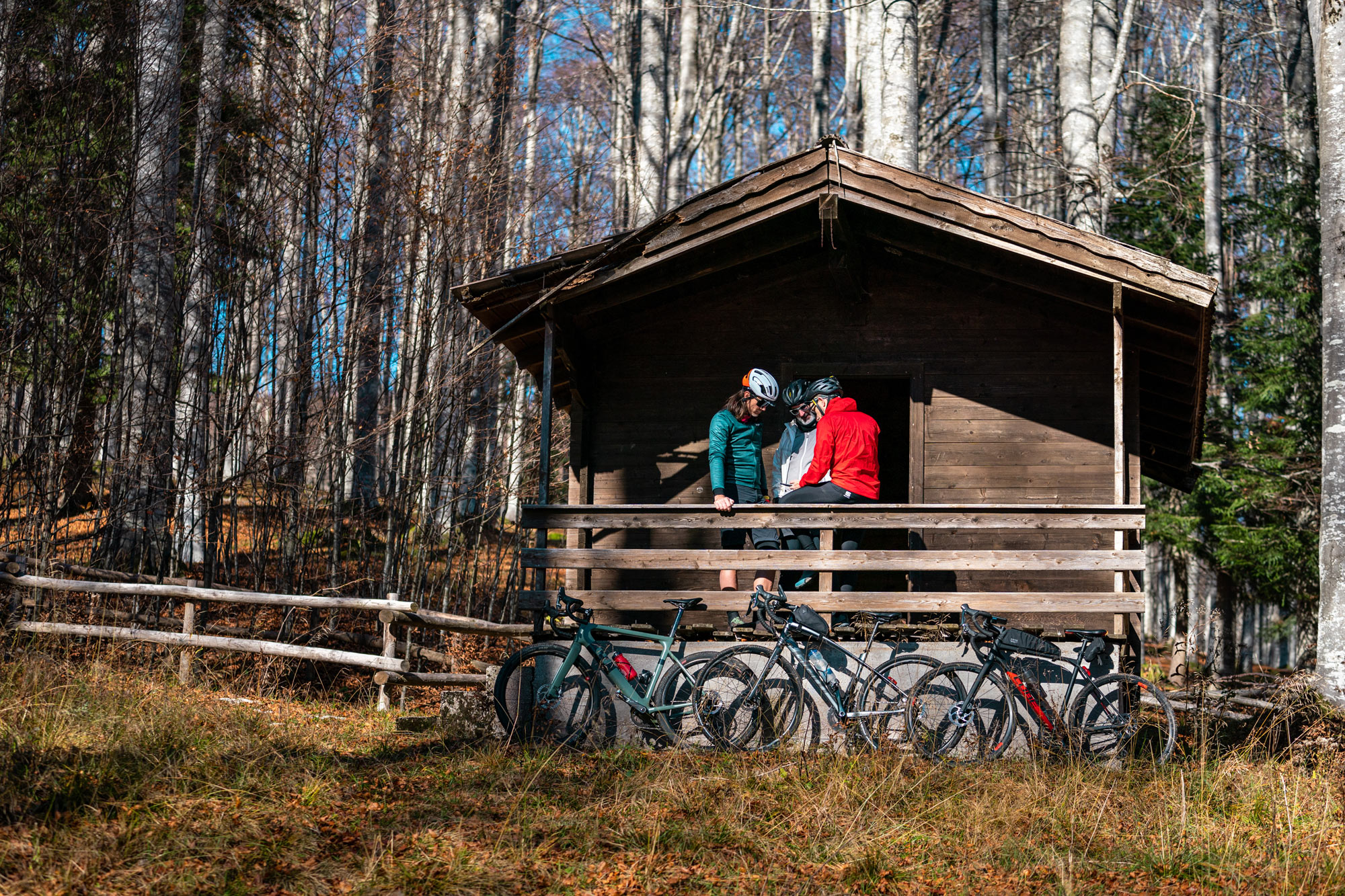
We’re back in the heart of the Cansiglio Forest, the ancient forest strongly characterized by a beechs that vary in splendid colors with the changing of the seasons. Lowering in altitude, the beech joins the silver fir and the red fir, forming a mixed forest that, at the end of winter, is pervaded by the intense scent of the mezereum. But we are in the middle of autumn, and we are cycling on a carpet of leaves that crackles and rises as we pass. 14km of a magnificent segment that winds between bumps and small valleys. In 1548 the Republic of Venice established the Gran Bosco de Reme here, whose tall trees were reserved for the production of the oars that moved the great Venetian galleys, huge boats feared by the fleets of ships of the entire Mediterranean Sea. The first part of the route that sinks into the Vallorch valley marks yet another check point, in a few we will intercept the asphalted road that will take us towards La Crosetta, a geographical reference point that see crowds of cyclists during weekends. At the sight of the first cars we turn up our noses, but it is only a short parenthesis. To round off, the last gem is still missing: it is Strada della Candaglia, a forest road on a mixed and regular ground that runs along the eastern side. The undergrowth here is closely related to the amount of light that filters through the canopy of the trees. It is a mature wood, characterized by silvicultural cuts that favor its natural renewal. We intercept the Slipari Trail, pass the entrance at Bus de La Lum and after 60km we are back at the starting point.
It’s lunch time and the plain, in the meantime, got populated by hit and run tourists. It is the other face of a vulnerable territory where the bond with the human community weakens or strengthens depending on the logics, goals and policies. Today, for a few hours, we have abandoned comfort, we have fled from the wide and crowded streets, we have relied on a route that has made us discover new treasures, we have become part of a great beauty. We just have to share our little adventure with the Komoot community, giving value to lands that are often unknown or forgotten. Because places, every place, speaks of us, is our mirror, knowing it and taking care of it means taking care of ourselves, of our own lives. I am sure that those who go in search of these environments, on their own feet, will be intrinsically interested in preserving them. Defending Cansiglio as a common good does not necessarily mean placing it under a bell jar. The real protection must be carried out by people like us, who explore nature surrounding us responsibly and who safeguard this cultural, social and environmental capital.
Click on the map below to find out more details, download the route or enter it on your GPS device!